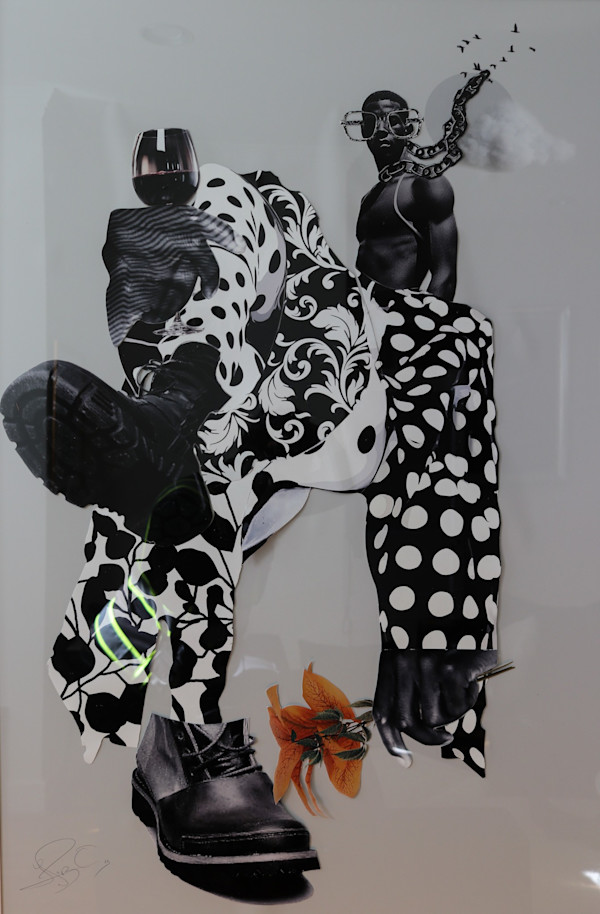-
Artist: Levi Robinson
Levi Robinson (b. 1971, Newark, NJ) is a contemporary mixed media artist whose work fuses portraiture, social commentary, and classical technique with the energy of hip hop culture. Raised during the rise of hip hop, Levi saw parallels between sampling music and visual collage—using fragments of the past to reimagine the present.
His early creative path was shaped by his uncle Earl Jones and refined at North Carolina Central University, where he transitioned from studying History to Graphic Design. Levi eventually co-founded his own art business to bypass traditional gatekeeping and bring his work directly to the people. That DIY ethos continues to inform his public art practice and collaborative initiatives.
Levi’s work explores the complexities of Black identity, memory, and resistance. Through paintings, collages, murals and installations, he aims to shift perspectives, challenge conventions, and humanize marginalized narratives.
He is the co-founder of Grail Arthouse and Brijz, and a member of the DMV League of Artists as well as Black Art Today Foundation. His work has been featured in Reuters, The New York Times, and National Geographic, and exhibited in major art fairs including Spectrum, Red Dot in Miami.
ARTIST STATEMENT
I create to question what we’ve been taught to accept.
My work is a visual negotiation between history and imagination. Drawing on classical painting techniques and collage, I reinterpret traditional narratives and challenge societal norms—particularly those surrounding race, religion, gender, and politics. My art is deeply personal yet universally political, born from my upbringing in Newark, New Jersey, and its surrounding area and shaped by the aesthetics of hip hop, personal loss, and the stories we’ve been denied.
Influenced by artists like Charles White, Ernest Barnes, Paul Goodnight, Gustav Klimt, Rembrandt and Alphonse Mucha, I use a muted palette and textured surfaces to echo both memory and struggle. Each piece is a remix—layers of paint, language, and legacy—pushed forward with palette knives and protest.
I believe art is a tool for recalibration: a way to spark dialogue, confront discomfort, and imagine new possibilities. Whether on canvas, in the streets, or across digital platforms, my work asks: What if we told the story differently?
